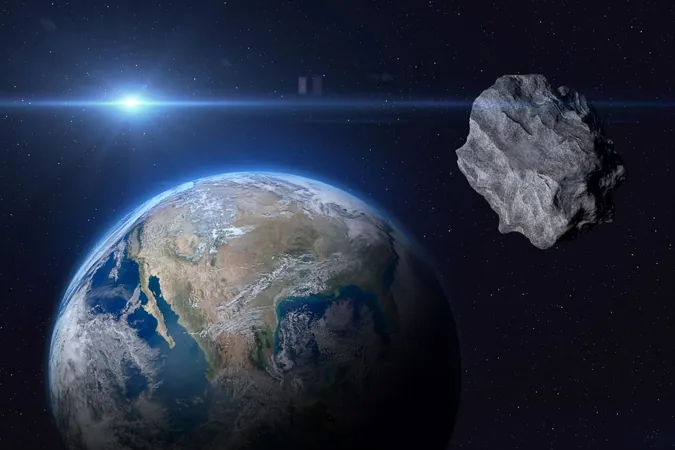
Meet Earth’s Hidden Quasi-Moon: 2025 PN7 Revealed After 60 Years!
2025-09-09
Author: Liam
Discovering 2025 PN7
Astounding news from the cosmos! Earth has a new guest—a hidden quasi-moon named 2025 PN7, which has been silently orbiting our planet since the 1960s. First spotted on August 2, 2025, this celestial body went unnoticed until recent archival images revealed its existence, suggesting it has been orbiting Earth for a staggering six decades. But don't worry, it poses no threat to our safety!
What Is 2025 PN7?
2025 PN7 is classified as a near-Earth asteroid, measuring between 15-30 meters in diameter—about one-third the height of the iconic Statue of Liberty. Dubbed an Arjuna asteroid, its presence was confirmed in recent research published by the American Astronomical Society. Models indicate that it has been maintaining a stable orbit since the 1960s, and it’s expected to stay in this trajectory for at least another 60 years. Currently, it shines in the constellation Piscis Austrinus, known as the 'Southern Fish', and orbits between 2.8 million miles and 37.2 million miles from our planet.
Understanding the Quasi-Moon
While Earth has one primary natural satellite, our planet is home to several intriguing quasi-moons or quasi-satellites. These objects create the illusion of orbiting Earth, but in reality, they follow sun-driven paths. 2025 PN7 is engaged in a 1-to-1 resonance with Earth, which gives it the appearance of being a companion to our planet.
What’s the Difference Between Quasi-Moons and Mini-Moons?
While quasi-moons like 2025 PN7 can linger for decades, mini-moons, on the other hand, are short-term visitors. These are asteroids temporarily snatched by Earth’s gravitational pull. For example, the asteroid 2024 PT5 orbited our planet briefly in 2024 for just 57 days before returning to its solar orbit.
2025 PN7 vs. Kamoʻoalewa: The Quasi-Moon Showdown
2025 PN7 is just one among seven known quasi-satellites orbiting Earth. The most noteworthy of these is Kamoʻoalewa (2016 HO3), discovered in 2016. Much larger than 2025 PN7, Kamoʻoalewa measures approximately 40-100 meters in diameter and has a captivating name meaning 'oscillating celestial object' in Hawaiian, reflecting its looping dance around Earth.
Future Exploration of 2025 PN7?
Exciting prospects lie ahead! China's upcoming Tianwen 2 mission is set to reach Kamoʻoalewa in July 2026, where it will gather data and even return a sample to Earth in 2027. But could 2025 PN7 be next on the exploration list? Sam Deen, an enthusiastic amateur astronomer, believes that its stable orbit might make it an attractive target for future spacecraft missions. They could potentially explore, collect samples, or even mine this intriguing asteroid without breaking the bank.
So keep your eyes on the skies—who knows what other secrets the universe has in store!









 Brasil (PT)
Brasil (PT)
 Canada (EN)
Canada (EN)
 Chile (ES)
Chile (ES)
 Česko (CS)
Česko (CS)
 대한민국 (KO)
대한민국 (KO)
 España (ES)
España (ES)
 France (FR)
France (FR)
 Hong Kong (EN)
Hong Kong (EN)
 Italia (IT)
Italia (IT)
 日本 (JA)
日本 (JA)
 Magyarország (HU)
Magyarország (HU)
 Norge (NO)
Norge (NO)
 Polska (PL)
Polska (PL)
 Schweiz (DE)
Schweiz (DE)
 Singapore (EN)
Singapore (EN)
 Sverige (SV)
Sverige (SV)
 Suomi (FI)
Suomi (FI)
 Türkiye (TR)
Türkiye (TR)
 الإمارات العربية المتحدة (AR)
الإمارات العربية المتحدة (AR)